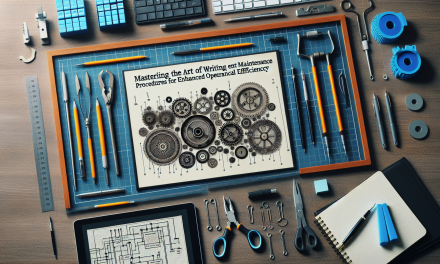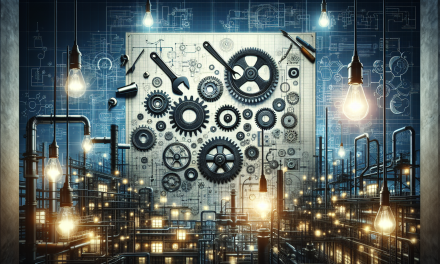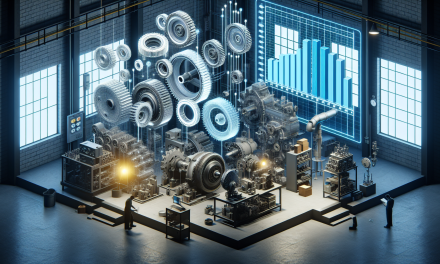Table of Contents
- Introduction
- Importance of Maintenance, Reliability & Asset Management
- Best Practices in Maintenance, Reliability & Asset Management
- Technology in Asset Management
- Training and Development
- FAQs
- Conclusion
Introduction
In today’s fast-paced industrial landscape, maintaining optimal performance and ensuring reliability in assets is crucial for success. Therefore, organizations must adopt best practices in maintenance, reliability, and asset management technology. By implementing effective strategies, companies can not only enhance their operational efficiency but also reduce costs and improve safety. Let’s dive deeper into the significance of these practices and explore actionable strategies that can help organizations thrive.
Importance of Maintenance, Reliability & Asset Management
First and foremost, understanding the importance of maintenance and reliability is essential. These elements play a pivotal role in ensuring that assets operate at peak efficiency.
1. Reducing Downtime
Unscheduled downtime can prove catastrophic for any organization. In fact, research shows that unplanned outages can cost businesses thousands of dollars each hour. Thus, effective maintenance practices help in identifying potential asset failures before they occur, thereby reducing downtime significantly.
2. Enhancing Asset Lifespan
Additionally, regular maintenance helps in extending the lifespan of assets. When combined with robust reliability strategies, organizations can achieve optimal performance while prolonging the life of their equipment. As a result, this leads to better resource allocation and reduced capital expenditures over time.
3. Improved Safety
Moreover, maintenance and reliability strategies directly contribute to workplace safety. Regularly maintained equipment operates more reliably, which minimizes the risks associated with equipment failure. Therefore, fostering a culture that prioritizes maintenance can lead to a safer working environment for all employees.
Best Practices in Maintenance, Reliability & Asset Management
Now that we understand the importance, let’s explore some best practices that organizations can adopt to enhance their maintenance, reliability, and asset management efforts.
1. Develop a Maintenance Strategy
Creating a well-defined maintenance strategy is essential. Organizations should assess their current operations and identify key maintenance goals, aligning them with overall business objectives. This strategic approach helps in ensuring that resources are allocated effectively.
2. Implement Predictive Maintenance
Predictive maintenance involves utilizing data analytics to determine when equipment maintenance should occur. By analyzing patterns in asset performance, organizations can predict failures before they happen, allowing them to perform maintenance at optimal times. In turn, this reduces downtime and enhances productivity.
3. Leverage Technology
Utilizing advanced technology in maintenance practices can significantly optimize operations. From the Internet of Things (IoT) to machine learning, technology enables real-time monitoring and data analysis. For instance, instituting a computer maintenance management system (CMMS) can streamline workflows and improve tracking.
4. Focus on Team Training and Development
Investing in team training is vital. Knowledgeable employees are more capable of implementing maintenance strategies effectively. Programs like the Certified Maintenance & Reliability Management Best Practices Course equip teams with critical skills needed for success.
5. Conduct Regular Audits and Assessments
Periodic audits aid in identifying gaps in maintenance processes. Organizations should regularly assess compliance with maintenance best practices, track performance metrics, and encourage open communication among staff.
Technology in Asset Management
Incorporating technology into asset management is no longer optional; it is a necessity for businesses aiming to stay competitive. Various technologies can play a significant role in improving maintenance and reliability efforts.
1. IoT and Asset Management
The Internet of Things (IoT) enhances visibility into asset performance. By connecting equipment and leveraging sensors, organizations can capture real-time data, enabling them to monitor conditions and collect actionable insights.
2. AI and Predictive Analytics
Artificial intelligence (AI) can take predictive maintenance to new heights. By analyzing substantial datasets, AI can identify trends and anomalies that may signal future equipment failures, allowing teams to respond proactively.
3. Cloud-Based Solutions
Cloud-based asset management solutions facilitate data accessibility and collaboration. Teams can easily access maintenance information from any location, which supports better decision-making.
Training and Development
Continuous training and development are crucial for maintaining a knowledgeable workforce. Organizations should encourage employees to pursue professional development opportunities. Here are some valuable resources:
1. Enhanced Training Programs
Consider exploring comprehensive guides like the Ultimate Guide to Creating Maintenance Excellence Training. These resources provide frameworks to develop robust training programs.
2. Troubleshooting Skills
Fostering troubleshooting skills is essential for efficient operations. Resources like Mastering Troubleshooting in Process Operations: A Comprehensive Guide offer practical insights that can empower teams to handle equipment failures effectively.
3. Decision-Making for Equipment Maintenance
Moreover, employees should understand how to make informed equipment maintenance and replacement decisions. The guide on Mastering Equipment Maintenance and Replacement Decisions for Enhanced Operational Efficiency presents strategies that help streamline decision-making processes.
4. Specialized Knowledge for Inspections
Lastly, developing specialized knowledge for specific applications such as refractory requires focused training. Accessing resources like Unlocking the Secrets of Refractory Applications: Inspection and Maintenance can greatly benefit your team.
5. Risk-Based Strategies
Additionally, understanding how to implement risk-based strategies for effective inspection and maintenance management is vital. Utilize the guide on Mastering Risk-Based Strategies for Effective Inspection and Maintenance Management to integrate risk assessment into your processes.
FAQs
1. What are the key elements of an effective maintenance strategy?
An effective maintenance strategy typically includes well-defined goals, predictive maintenance practices, technology integration, regular audits, and ongoing team training.
2. How can technology improve maintenance practices?
Technology enhances maintenance practices by providing real-time data, streamlining processes, and enabling predictive analytics to anticipate equipment failures.
3. Why is training essential for maintenance and reliability?
Training empowers employees with the knowledge and skills necessary for implementing effective maintenance strategies, ultimately improving overall operational efficiency.
Conclusion
In conclusion, implementing maintenance, reliability, and asset management technology best practices is essential for organizations striving for operational excellence. By adopting strategic approaches, leveraging advanced technologies, and investing in team training, businesses can significantly improve their performance while reducing costs and enhancing safety. Therefore, start your journey towards better maintenance and reliability today.





